#gisera
Explore tagged Tumblr posts
Photo

🧜♀️❤Sera & Suni❤🧜♀️ 🧜♀️Totem's Realm Mermaid AU🧜♀️ #TotemsRealm #mermaidau #Sera #GiSera #Suni #oc
1 note
·
View note
Text
China’s Belt and Road Initiative (BRI) - what we can learn and some of the implications on a new world order
(Do you want to learn about China’s current strategy to further their economic and political goals? Read on with a short description of this enormous project.
The Belt and Road initiative is a project under development by China that is incentivising many European, Asian and African countries to accept Foreign Direct Investment (FDI) opportunities from China. Coined ‘debt financing’ by some critics of China’s BRI (debt financing is when a country coils another country into accepting deals with payments beyond the scope of the country’s ability to pay that back thereby acquiring the land, capital or patent etc.) encompasses most of the modern world but is targeting largely underdeveloped nations. Underdeveloped nations are ripe with uncertainty and politicians that are constantly seeking to improve the welfare of their citizens - many of their policies suffocated by short-term achievements lenses. These seemingly solutions in the immediate term (providing jobs and short term economic growth) can lead to significant problems in the future (debt financing). Aside from the negatives of FDI (Income repatriation, foreign ownership of land or companies, and a general disregard for the environmental/local impacts on communities) FDI is, statistically speaking, beneficial for countries which is why it has been taken up by most countries. The BRI’s main objective is to root out resource insecurity - a major barrier which is wedging the ability for China to develop. China requires large quantities of steel for the production of the many large infrastructure projects (which inherently improves productivity and the ability for an economy to produce more - improved quality of resources) which with Chinese companies backed by the government are currently infiltrating the Australian soil. Currently, it is a loss-loss situation for the Australian government. The Foreign Investment Review Board (FIRB) is denying many Chinese companies the right to export iron ore back to China (solving their resource scarcity needs) politically with Chinese sanctions on Australian trade - and China seeking other iron ore exporters like Brazil. A major project for the BRI was a China-Pakistan economic corridor facilitating China’s access to the Arabian Sea, bypassing tension in the South China Sea and gaining greater access to quicker and cheaper trade. Ultimately, the BRI, from a United States perspective, is observed as a threat to the current world order - one which the USA might not dominate through the rise of Asia (its attempt to have an improved relationship with Korea, Japan, India, and Taiwan to maintain its foothold in the region is evident) but will ultimately bring about beneficial development for countries that need it the most - even if it means the loss of liberal democratic values for some of these countries influenced largely by the CCP.
The QUAD (USA, Australia, Japan, India) have instigated the Blue Dot Network to combat and rival the BRI, however, nowhere near to the scale of the BRI. Australia is concerned about the rapid growth of China, and its threat to invade Taiwan as part of its ‘One China’ Policy. Moreover, Australia is recent years has been relatively unsubmissive to China and is generally backed by the Australian people so as not to be the victim of economic and political bullying by China. However, I personally don’t think that the Australian people are willing to suffer lower standards of living if we are willing to combat Chinese trade restrictions and a possible total social and economic exclusion. Nonetheless, there is most definitely a shifting rhetoric in our dealings with China - even with us ordinary citizens, not just the politicians - that is shifting the way China is dealing with us Australians. We have called out the human rights violations of their ‘re-education camps’, the stealing of intellectual data, called for an independent investigation into the origin of COVID-19 ultimately seeking more transparency (ironic I know - Witness K and many closed tribunals, attempting to pass laws to ban satirical media against Commonwealth officials, covering the real truth behind a ‘gas lead recovery’ through GISERA, Timor Leste, Indigenous peoples, Religious freedoms Bill, no independent corruption investigation committee - the list goes on however it is a subject for another post here down the line) it is evident that Australia is standing up to China.
#belt and road initiative#belt and road#belt and road infrastructure pact#australian politics#usa politics#china politics#world events#global politics#politics#us politics#economics#international relations#education#learning
2 notes
·
View notes
Text
Ô Soleil Noir D'Ébène !
Sent tu l'haleine des plaines ?
Là où court l'Enfant Orange
Qui s'accroupie et mange un Ange
L'enfant court ,le cœur lisse et innocent
Gisera dans son sang ,glissera de son flan
Les matins d'aubepine se décapitent alors !
L'Aube d'épine démembre son corps
Ô Enfant Orange ! Où as tu vu ces Diable
D'où viennent ces traces qui te dérangent? Qui est l'exécrable ?
Ton visage à l'odeur des cris violés
Sous le rivage ,l'orage était viole de gambe timoré
Dis moi qui est ce coupable
Le monde immonde ,les monstres ou les ronces de l'école ?
Cite moi le minable petite fiole
Ton corps rond citera ce Diable
Ô Enfant Orange qui souris des cieux douceur-corail
La trame enfin s'écris dans ton feu couleur paille
Le temps cris et s'eventre devant tes inventions
Tel un incendie dans l'antre de tes incarnations
Jaloux de ta tumultueuse et sanglante lumière
Et de ton Cœur couleur aurore ,abricot ou or rouillé
Pour l'Adulte ,l'enfant sanglote mais en vérité il pleure la mer
Rêveuse, dépouillée comme ce coquelicot fou car ébouillanté
Un Enfant Orange prie les cimetières et les aurores
S'enfantant enfin lui-même dans sa peau ,son estuaire et ses pores
Il à la peau d'un mur l'Enfant Orange
Mais son corps murmure la Joie ,comme cet Ange qui dérange tant le Vide
Nébuleuse
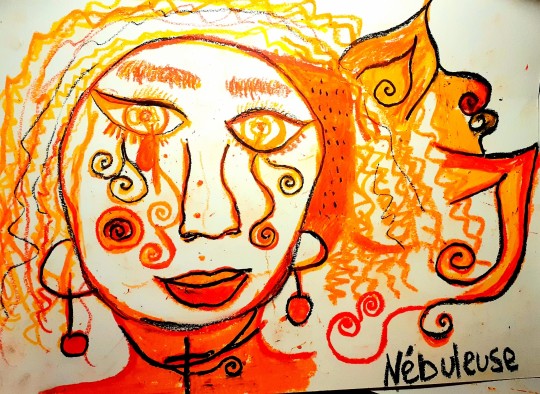
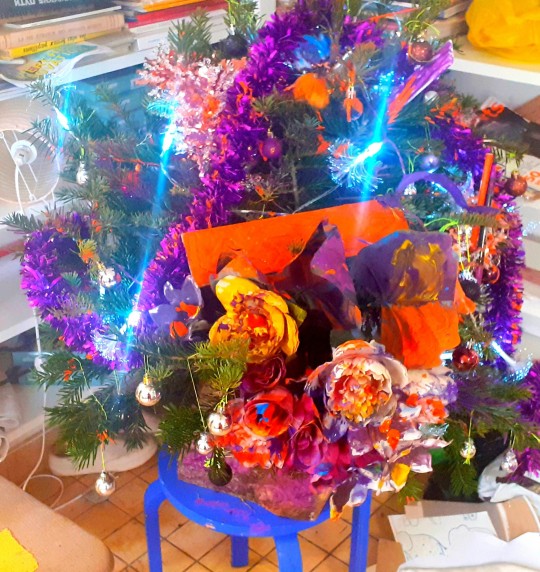
7 notes
·
View notes
Photo

Familia Gisera 🫰 https://www.instagram.com/p/Cd8J1YcJvzXdjgaNqmGr28Ym_A4OJItILo0ZFw0/?igshid=NGJjMDIxMWI=
0 notes
Text
Blind shrimps, translucent snails
By Jenny Davis, Charles Darwin University; Daryl Nielsen, CSIRO; Gavin Rees, CSIRO, and Stefanie Oberprieler, Charles Darwin University
There aren’t many parts of the world where you can discover a completely new assemblage of living creatures. But after sampling underground water in a remote, arid region of northern Australia, we discovered at least 11, and probably more, new species of stygofauna.
Stygofauna are invertebrates that have evolved exclusively in underground water. A life in complete darkness means these animals are often blind, beautifully translucent and often extremely localised – rarely living anywhere else but the patch they’re found in.
The species we discovered live in a region earmarked for fracking by the Northern Territory and federal government. As with any mining activity, it’s important future gas extraction doesn’t harm groundwater habitats or the water that sustains them.
Our findings, published today, show the importance of conducting comprehensive environmental assessments before extraction projects begin. These assessments are especially critical in Australia’s north, where many plants and animals living in surface and groundwater have not yet been documented.
When the going gets tough, go underground
Stygofauna were first discovered in Western Australia in 1991. Since then, these underground, aquatic organisms have been recorded across the continent. Today, more than 400 Australian species have been formally recognised by scientists.
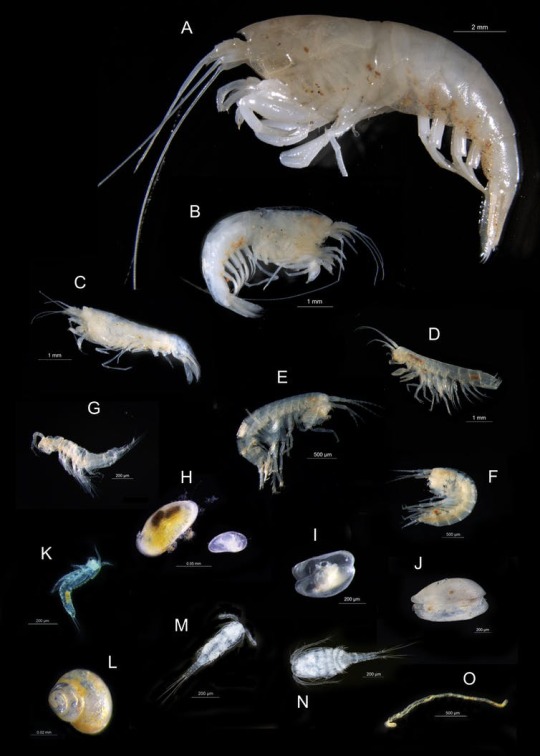
The subterranean fauna we collected from NT aquifers, including a range of species unknown to science. A–C: Atyid shrimps, including Parisia unguis; D-F: Amphipods in Melitidae family; G: The syncarid species Brevisomabathynella sp.; H-J: members of the Candonidae family of ostracods; K: the harpacticoid species Nitokra lacustris; L: a new species of snail in the Caenogastropoda: M-N: Members of the Cyclopidae family of copepods; O: The worm species Aeolosoma sp. GISERA, Author provided
Stygofauna are the ultimate climate change refugees. They would have inhabited surface water when inland Australia was much wetter. But as the continent started drying around 14 million years ago, they moved underground to the relatively stable environmental conditions of subterranean aquifers.
Today, stygofauna help maintain the integrity of groundwater food webs. They mostly graze on fungal and microbial films created by organic material leaching from the surface.
A thriving stygofauna ecosystem lies beneath the surface of northern Australia’s arid outback. We sampled water through bores to measure their presence. Credit: Jenny Davis, Author provided
In 2018, the final report of an independent inquiry called for a critical knowledge gap regarding groundwater to be filled, to ensure fracking could be done safely in the Northern Territory. We wanted to determine where stygofauna and microbial assemblages occurred, and in what numbers.
Our project started in 2019, when we carried out a pilot survey of groundwater wells (bores) in the Beetaloo Sub-basin and Roper River region. The Beetaloo Sub-basin is potentially one of the most important areas for shale gas in Australia.
What we found
The stygofauna we found range in size from centimetres to millimetres and include:
two new species of ostracod: small crustaceans enclosed within mussel-like shells
a new species of amphipod: this crustacean acts as a natural vacuum cleaner, feeding on decomposing material
multiple new species of copepods: tiny crustaceans which form a major component of the zooplankton in marine and freshwater systems
a new syncarid: another crustacean entirely restricted to groundwater habitats
a new snail and a new worm.
These species were living in groundwater 400 to 900 kilometres south of Darwin. We found them mostly in limestone karst habitats, which contain many channels and underground caverns.
Perhaps most exciting, we also found a relatively large, colourless, blind shrimp (Parisia unguis) previously known only from the Cutta Cutta caves near Katherine. This shrimp is an “apex” predator, feeding on other stygofauna — a rare find for these kinds of ecosystems.
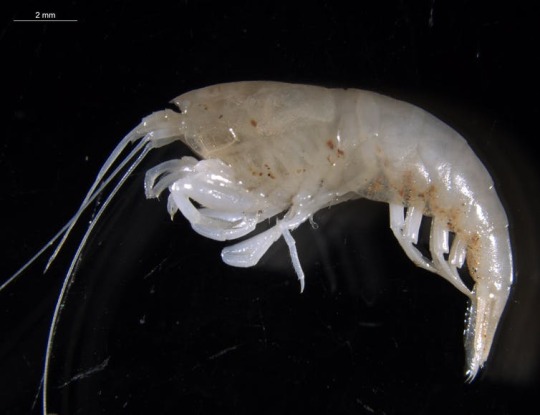
A microscopic image of Parisia unguis, a freshwater shrimp. Credit: Stefanie Oberprieler, Author provided
Protecting groundwater and the animals that live there
The Beetaloo Sub-basin in located beneath a major freshwater resource, the Cambrian Limestone Aquifer. It supplies water for domestic use, cattle stations and horticulture.
Surface water in this dry region is scarce, and it’s important natural gas development does not harm groundwater.
The Beetaloo Basin is part of the federal government’s gas expansion strategy. Credit: Department of Industry, Science, Energy and Resources
The stygofauna we found are not the first to potentially be affected by a resource project. Stygofauna have also been found at the Yeelirrie uranium mine in Western Australia, approved by the federal government in 2019. More research will be required to understand risks to the stygofauna we found at the NT site.
The discovery of these new NT species has implications for all extractive industries affecting groundwater. It shows the importance of thorough assessment and monitoring before work begins, to ensure damage to groundwater and associated ecosystems is detected and mitigated.
Where to from here
Groundwater is vital to inland Australia. Underground ecosystems must be protected – and not considered “out of sight, out of mind”.
Our study provides the direction to reduce risks to stygofauna, ensuring their ecosystems and groundwater quality is maintained.
Comprehensive environmental surveys are needed to properly document the distribution of these underground assemblages. The new stygofauna we found must also be formally recognised as a new species in science, and their DNA sequence established to support monitoring programs.
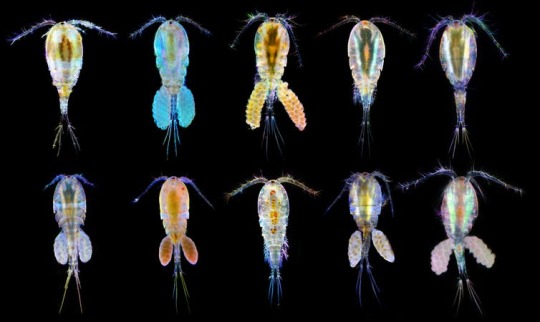
Different species of copepods from various parts of the world. Credit: Andrei Savitsky/Wikimedia, CC BY-SA
Many new tools and approaches are available to support environmental assessment, monitoring and management of resource extraction projects. These include remote sensing and molecular analyses.
Deploying the necessary tools and methods will help ensure development in northern Australia is sustainable. It will also inform efforts to protect groundwater habitats and stygofauna across the continent.
Jenny Davis, Professor, Research Institute for Environment & Livelihoods, Charles Darwin University, Charles Darwin University; Daryl Nielsen, Principal Research Scientist, CSIRO; Gavin Rees, Principal Research Scientist, CSIRO, and Stefanie Oberprieler, Research associate, Charles Darwin University
This article is republished from The Conversation under a Creative Commons license. Read the original article.
Blind shrimps, translucent snails published first on https://triviaqaweb.weebly.com/
0 notes
Photo

First time spending Holy Week outside home. Laag with Teams Sitier, Jacosalem, Morales, Pare, Enriquez and Gisera. https://www.instagram.com/p/CNQGGHrnCngd6Gm0ULCkd-MQnbuhCEr-DgQV6Q0/?igshid=ffyvpwfq1puc
0 notes
